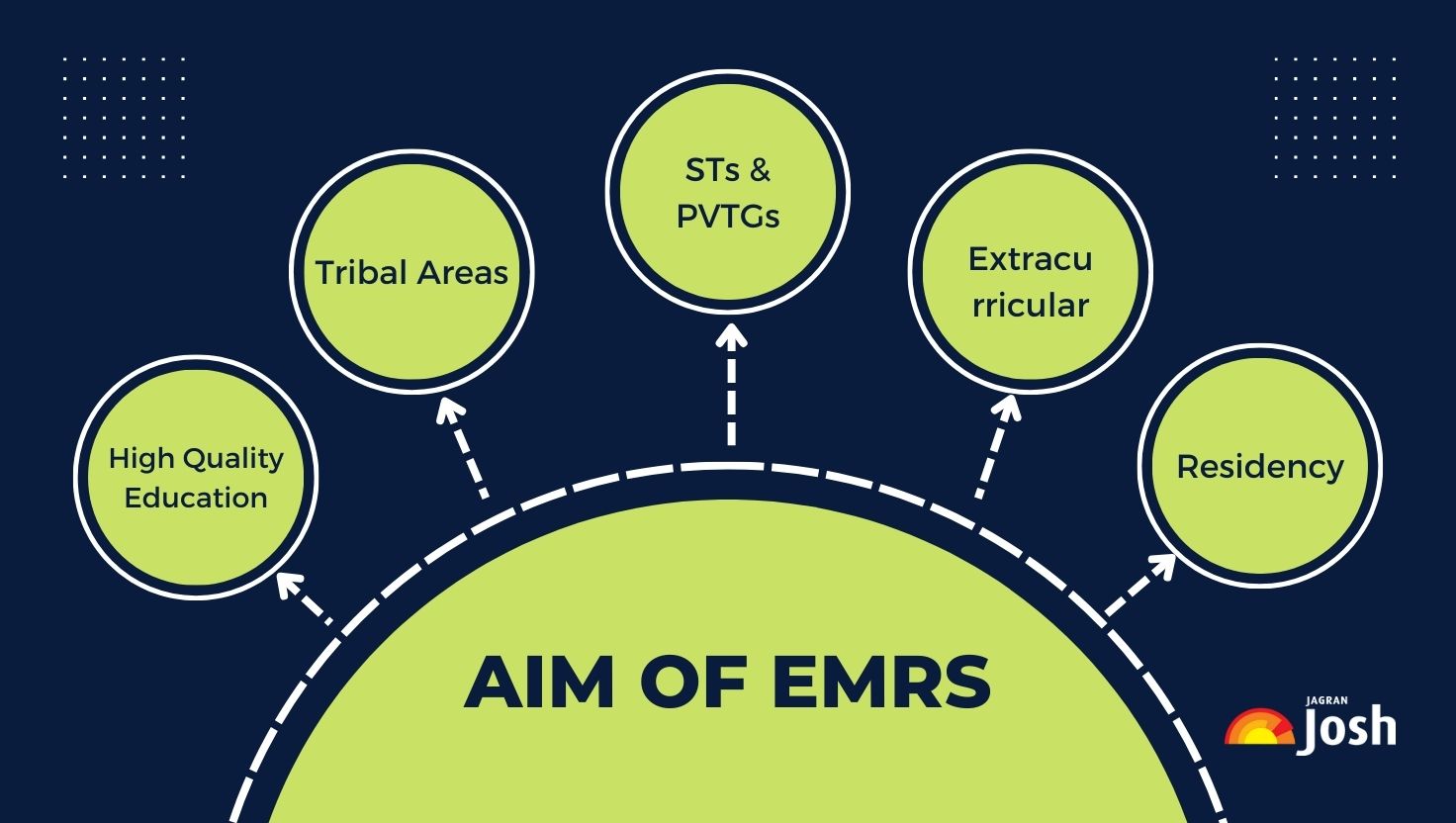EMRS Full Form: The Eklavya Model Residential Schools (EMRS) are a key initiative of the Indian Government aimed at promoting education in tribal areas. These schools are designed to provide quality residential education to tribal children, ensuring they have access to modern education, facilities, and overall development. The EMRS initiative aims to bridge the educational gap and ensure that students from tribal communities have access to equal opportunities. The initiative focuses on preserving the cultural heritage of tribal communities while enabling students to achieve academic excellence and prepare for competitive opportunities in the future.
EMRS Full Form: Overview
| Category | Details |
| What is the full form of EMRS? | Eklavya Model Residential Schools |
| When was the EMRS Scheme officially launched? | 2000 |
| Who manages the EMRS Scheme? | Ministry of Tribal Affairs |
| What are the primary objectives of EMRS? | Providing quality education, preserving tribal culture, and improving social and economic status of tribal children. |
| How many EMRS schools are operational? | As of 2025, over 700 schools are operational across India. |
| What kind of education does EMRS provide? | Residential, free-of-cost education focusing on academics, sports, and cultural activities. |
| Official EMRS Website |
EMRS History
The Eklavya Model Residential Schools (EMRS) were established by the Government of India under the Ministry of Tribal Affairs. The program was first launched in the year 2000 with the purpose of providing quality education to tribal students who lacked access to standard schooling. The schools aim to equip students with the necessary skills and knowledge to excel academically while promoting their cultural identity.
The initiative is named after Eklavya, a character from ancient Indian mythology, who is known for his dedication to learning and his perseverance despite challenges. This symbolic connection reflects the essence of EMRS- providing equal opportunities for tribal children to excel in education and beyond.
Also, checK:
EMRS Full Form in Education
EMRS full form in education refers to the Eklavya Model Residential Schools. These schools are established to impart education to the students in the tribal belts and also provide residential services.
Aim of EMRS
The schools are designed to offer high-quality education at the upper primary, secondary, and senior secondary levels to Scheduled Tribe (ST) and Particularly Vulnerable Tribal Group (PVTG) students in tribal areas. In addition to academic learning, these schools provide extracurricular activities to help students access top educational opportunities and bridge the gap between them and the general population.

EMRS Objectives
- To foster the overall development of students in EMRS, empowering them to become change agents in their schools, homes, villages, and beyond.
- To provide targeted educational support for students in Standards VI-X and XI-XII, addressing their distinct needs.
- To ensure sufficient funding for staff remuneration and facility maintenance.
- To support infrastructure development that meets the educational, physical, environmental, and cultural needs of students.
EMRS Eligibility Criteria
The EMRS scheme is intended specifically for children from Scheduled Tribes (ST) categories. The eligibility criteria for admission to these schools are as follows:
Eligibility Criteria
| Criteria | Details |
| Nationality | Indian Citizen |
| Community | Must belong to the Scheduled Tribe (ST) category |
| Age | Varies based on the class applied for (typically, children in the age group of 6 to 18 years) |
| Residence | Applicants must be residents of tribal areas, usually defined by specific regions in India |
| Admission Process | Based on entrance exams and interviews (depending on the state and specific EMRS) |
EMRS: Key Features
The EMRS initiative is a game-changer in the realm of tribal education. Below are the key features that make EMRS unique:
- Residential Education: EMRS schools provide free residential education to tribal students, with all their educational needs (including lodging, food, and clothing) being taken care of.
- Quality Education: The curriculum in EMRS schools follows the Central Board of Secondary Education (CBSE) syllabus, ensuring that students receive the same level of education as their urban counterparts.
- Comprehensive Development: Along with academics, EMRS schools focus on holistic development, including sports, cultural activities, leadership skills, and more. This prepares students for higher education and professional opportunities.
- Infrastructure & Facilities: The schools are equipped with modern infrastructure, including libraries, science labs, computer labs, and sports facilities to support the overall development of the students.
Importance of EMRS
EMRS plays a vital role in the empowerment of tribal communities across India. Here are the primary benefits:
- Educational Empowerment: By providing quality education to tribal children, EMRS ensures that they have an opportunity to break the cycle of poverty and illiteracy that often plagues these communities.
- Preservation of Culture: While focusing on modern education, EMRS schools also teach students about their rich cultural heritage and traditions, ensuring that tribal identities are preserved.
- Increased Employment Opportunities: The education provided at EMRS opens doors for students to pursue higher education, join the workforce, and contribute to the development of their communities.
- Social and Economic Equality: EMRS plays a pivotal role in bridging the educational gap between urban and rural India, helping marginalized tribal communities achieve social and economic equality.
EMRS School List
Eklavya Model Residential Schools (EMRS) are a unique set of residential schools in India, initiated by the Ministry of Tribal Affairs, to deliver quality education to tribal students from Classes VI to XII. Located in tribal areas, these schools offer a well-rounded educational experience that emphasizes not only academics but also extracurricular activities and the preservation of tribal culture.
Also Check:
Comments
All Comments (0)
Join the conversation